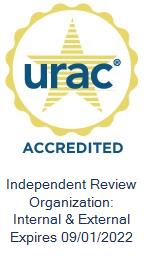While you’re there, be sure to attend these sessions:
Severity, Frequency & Claim Costs—How to Address Work Comp Trends
- Presenters: Michele Hibbert-Iacobacci, Senior VP, Regulatory Compliance Management; Rebecca Morgan, Senior Director, Product Management; Ron Skrocki, Senior VP, Product Management
- Room: Innovation & Solutions Theater in Expo
- Session Number ST01
- Wednesday, November 6, 10:30 AM – 11:30 AM
Over the past 10 years, workers’ compensation claim frequency has been steadily decreasing, but at the same time, severity has been on the rise — generally outpacing the decline in frequency. As the market continues to face these changes and challenges, claims organizations need to understand the trends and find technology, workflow and other solutions to help manage rising costs. You will learn more about the current trends in the workers’ compensation market and take away tactics and best practices to address these challenges.
Regulatory Compliance Trends for 2019 and Beyond.
- Presenters: Brian Allen, VP of Government Affairs & Michele Hibbert-Iacobacci, Senior VP, Regulatory Compliance Management
- Room: South Pacific F
- Session Number: LR2
- Wednesday, November 6, 2:30 PM – 3:45 PM





 bring down prices.
bring down prices.  individuals or society, however, are debated. Related steps to address the problem are also heavily argued. After all, the growth in our girths is a new normal, while folks rail against airline seats rather than confront those of us who can’t fit into them.
individuals or society, however, are debated. Related steps to address the problem are also heavily argued. After all, the growth in our girths is a new normal, while folks rail against airline seats rather than confront those of us who can’t fit into them. What once seemed like an innocent slobbery kiss from a dog now has the nickname “the lick of death.” Capnocytophaga canimorsus is a commonly found bacteria in the saliva of healthy dogs and cats. In most cases this bacteria is not harmful, but in rare cases this bacteria can get into the human blood stream and cause death.
What once seemed like an innocent slobbery kiss from a dog now has the nickname “the lick of death.” Capnocytophaga canimorsus is a commonly found bacteria in the saliva of healthy dogs and cats. In most cases this bacteria is not harmful, but in rare cases this bacteria can get into the human blood stream and cause death. Here’s some exciting health news to kick start your weekend: for the first time, scientists have found a way to lower risk of dementia.
Here’s some exciting health news to kick start your weekend: for the first time, scientists have found a way to lower risk of dementia. It is common knowledge that exercise burns calories, and burning calories will help people lose weight, but
It is common knowledge that exercise burns calories, and burning calories will help people lose weight, but 